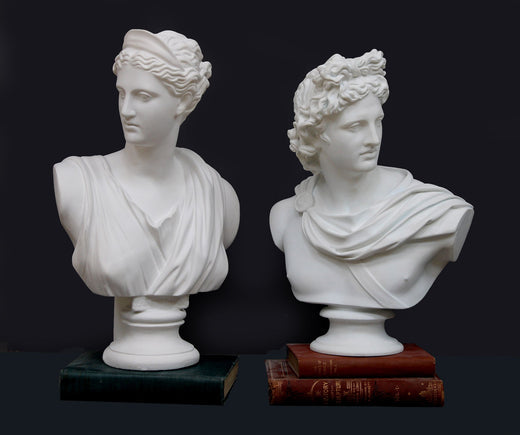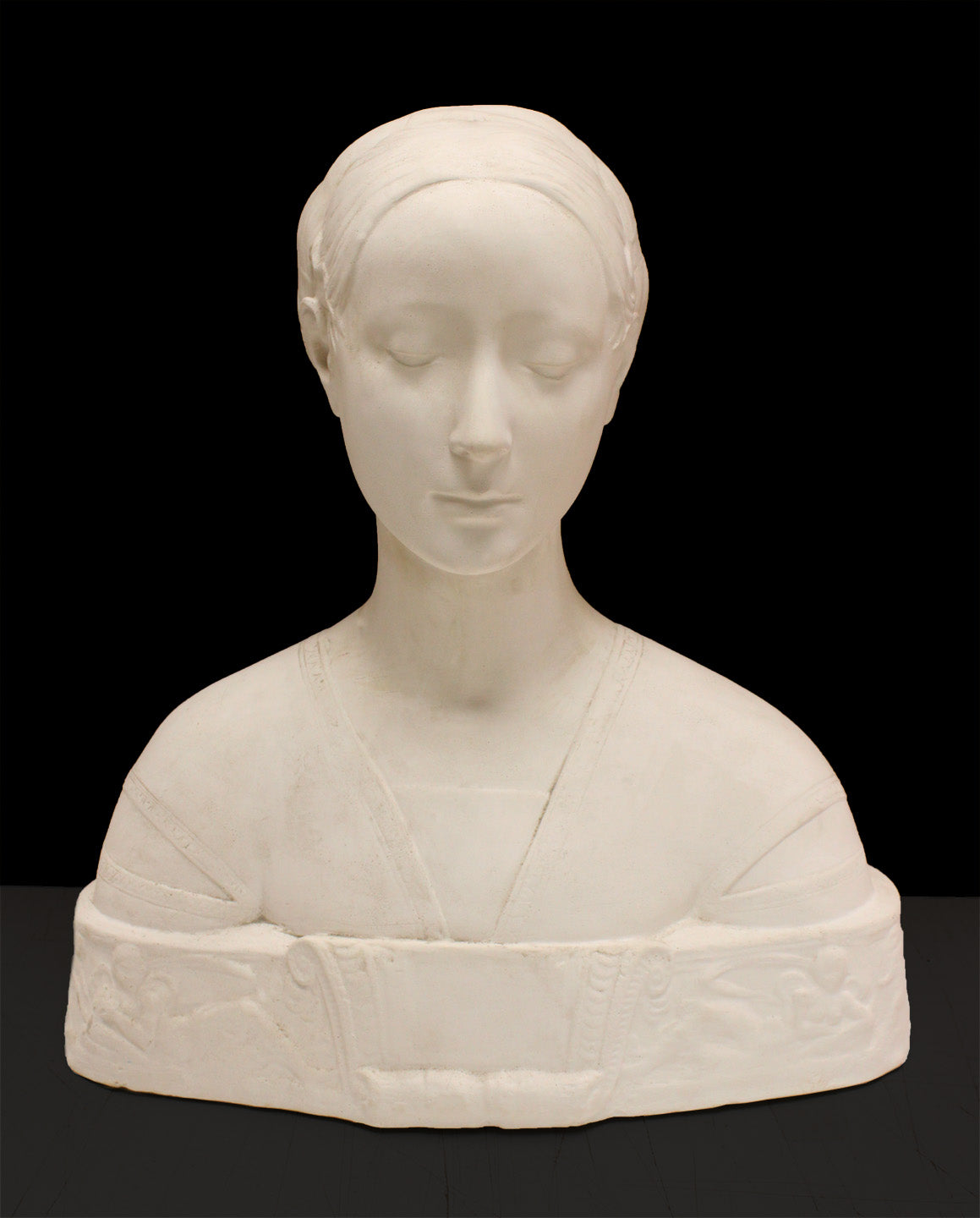Have you ever heard of an “écorché”? We have several of these in our collection. The French word “écorché” means “flayed,” and refers to an artwork in which the human body is depicted without skin in order to illustrate the muscles. Artists, like Jean-Antoine Houdon and Michelangelo, sculpted or sketched écorchés as studies for their works, and art students made them beginning with the French art schools of the 19th century, where the term came into usage.
We have four écorché sculptures that are full figures, in addition to a head, torsos, hands, and feet, all under the anatomical sculpture collection on our website. These four figures have been offered by our gallery since its first catalog was published in 1894. They have been popular with art schools and students as well as with art collectors and people in the medical field. We recently conducted further research on our écorchés, and we found some great information on these pieces we wanted to share with you.

Let’s begin with a look at Anatomy of Man 2. The movement throughout this piece is remarkable as the man’s limbs, appendages, head, and torso are all bent, creating a twisting figure. We can only imagine if there was a story behind this anatomical figure or if it was a study for another sculpture. It was long thought to have been sculpted by Michelangelo, but is today attributed to Pierre Puget (1620-1694). It is possible Puget created it with reference to an earlier work made by Michelangelo, one of his students, or someone working in his style. A popular study piece, it has been copied by such artists as Paul Cézanne and Henri Matisse.

The piece we call Anatomical Man (New) has its own share of movement. The man appears to be taking a step onto his right foot and has his left arm raised above him, hand flexed. His right arm has been brought back and his hand is in a fist. Our 1894 catalog described the figure as “Anatomy of Man, in fighting position.” Indeed, the name given the sculpture by its maker was L’Ecorche Combattant, or, simply translated, the skinned fighter. The right arm is likely preparing to extend a blow while the left arm shields him from the opponent’s current attack. The artist is French sculptor Jacques-Eugene Caudron (1818-1865). He created this piece for a French doctor, Antoine-Louis-Julien Fau, who asked Caudron to sculpt an anatomical figure for his book on human anatomy for artists' reference. A few decades later, authors Mathias Duval and Édouard Cuyer described this endeavor in their 1898 book Histoire de l'anatomie plastique and stated that “l'ecorche dit de Caudron est certainement l'un des plus exacts et des plus demonstratifs que nous connaissions.” In other words, Duval and Cuyer tell the reader that Caudron’s écorché is one of the most accurate and illustrative they have seen.

Anatomical Man No. 3 is a figure standing in contrapposto with the right arm outstretched. Neoclassical sculptor Jean-Antoine Houdon (1741-1828) created this study (at 28 inches high and also life-size) in preparation for a marble sculpture of Saint John the Baptist. Upon seeing the anatomical study, his friends and colleagues recognized it as an important artwork in its own right and suggested he make a mold of it to produce copies. Houdon's anatomical study became widely popular. He gave and sold many copies of it to art academies and schools. The study continues to be utilized by artists today for its beautiful representation of the human form. (For further reading about this piece, see Anne L. Poulet’s great book, Jean-Antoine Houdon: Sculptor of the Enlightenment, which you can also find on the product page. Be sure to take a look at pages 63 to 66 and 73 to 76.)


The last piece we’re going to talk about is Anatomy of Man 1. It’s quite similar to another écorché by Houdon, but information on it or its sculptor is elusive. The figure is stepping forward or backward with his right arm raised up above his head. Both hands are clenched around tube-shaped items. As stated earlier, Anatomy of Man 1 has been offered by our gallery since the turn of the 19th century, and so has been studied by generations of art students.
The next time you see a sculpture, painting, or sketch of an écorché, look past the artist’s study and see it for what it really is - a painstakingly detailed artwork of the human body.
Best,
Kayla
Please note: Sources used can be found on the relevant item page.

